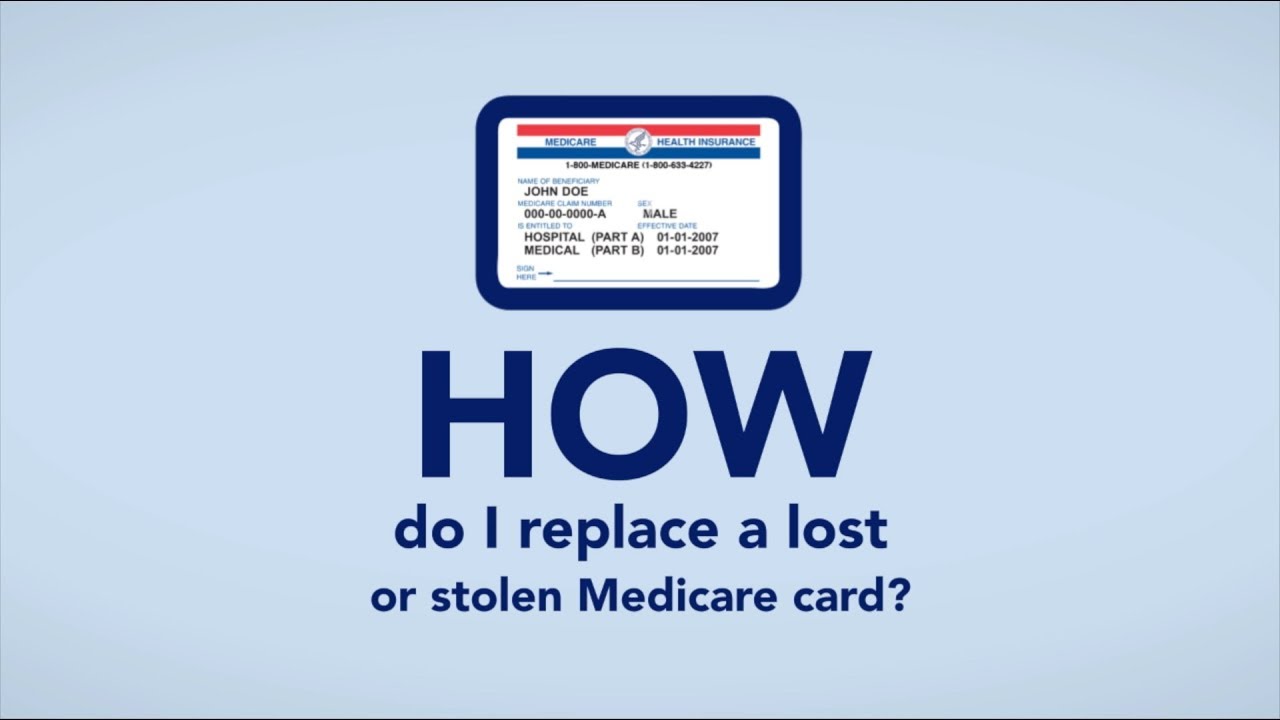

Finance
What Happens If I Lose My Insurance Card
Published: November 21, 2023
If you lose your insurance card, it's important to act quickly to avoid any financial complications. Find out what steps to take to minimize financial impact.
(Many of the links in this article redirect to a specific reviewed product. Your purchase of these products through affiliate links helps to generate commission for LiveWell, at no extra cost. Learn more)
Table of Contents
Introduction
Having an insurance card is essential for accessing healthcare services and proving coverage in case of an emergency. It serves as identification and proof that you are enrolled in an insurance plan. However, there may be instances when you misplace or lose your insurance card, leaving you in a state of worry and confusion.
Whether your insurance card goes missing or is stolen, it is crucial to understand the steps you need to take to ensure you have uninterrupted coverage. This article explores what happens if you lose your insurance card and provides you with the necessary guidance to navigate this situation.
While losing your insurance card may feel overwhelming, it’s important to stay calm and take immediate action. Failure to address the issue promptly can result in delays in obtaining the healthcare services you need and potential complications with your insurance provider.
So, if you find yourself without your insurance card, take a deep breath and follow the steps outlined in this article. By doing so, you will be on your way to resolving the situation and regaining the peace of mind that comes with having insurance coverage.
Importance of Insurance Card
Your insurance card is more than just a piece of plastic. It holds valuable information that is vital for receiving medical care and accessing the benefits of your insurance plan. Here are a few reasons why your insurance card is of utmost importance:
- Proof of Coverage: Your insurance card serves as proof that you are enrolled in an insurance plan and have active coverage. It is required when you visit healthcare providers, hospitals, or pharmacies. Without your insurance card, you may face difficulties in receiving the care you need.
- Access to Healthcare Services: Showing your insurance card at healthcare facilities allows you to receive medical services without having to pay the full cost out of pocket. It provides the necessary information for healthcare providers to bill your insurance company directly.
- Emergency Situations: In case of an emergency, your insurance card is crucial. It provides important details, such as your policy number and contact information, which emergency medical personnel may need to quickly verify your coverage and make necessary arrangements for your care.
- Documenting Health History: Your insurance card contains information about your insurance provider, policy number, group number, and other essential details. These details are often required when filling out medical forms, making appointments, or updating your healthcare records.
- Prescription Medications: Many pharmacies require your insurance card to process prescription medications. Without it, you may need to pay the full cost upfront or face delays in medication pickup.
It is important to treat your insurance card with care and keep it in a safe place. However, if you find yourself without your insurance card, do not panic. There are steps you can take to rectify the situation and ensure that you have uninterrupted access to healthcare services.
Immediate Steps to Take
If you realize that you’ve lost your insurance card, it’s important to take immediate action. Here are the steps to follow:
- Check for Misplacement: Before assuming that your insurance card is lost, double-check your belongings, wallet, and bags for any signs of misplacement. Sometimes, we may overlook where we last placed our cards.
- Report the Loss or Theft: If you are unable to locate your insurance card, it’s important to report the loss or theft to your insurance provider as soon as possible. Contact their customer service hotline or visit their website to report the incident.
- Protect Your Information: If your insurance card was stolen, ensure that you protect yourself from potential identity theft. Keep a close eye on your credit reports and notify your bank or credit card companies of the situation if necessary.
- Inform Healthcare Providers: Reach out to your healthcare providers and inform them about the loss of your insurance card. They may be able to assist you in navigating the situation or provide alternative arrangements for your care.
- Request Temporary Coverage Verification: While waiting for a replacement card, ask your insurance provider to provide you with a temporary coverage verification letter or document. This can serve as proof of insurance until you receive your new card.
Remember, addressing the loss of your insurance card promptly is crucial to ensure uninterrupted access to healthcare services. By taking these immediate steps, you are actively working towards resolving the situation and minimizing any potential disruptions in your coverage.
Contacting Insurance Provider
Once you discover that your insurance card is lost or stolen, it is important to notify your insurance provider right away. Here are the key steps to take when contacting your insurance provider:
- Locate Customer Service Contacts: Find the customer service phone number or email address for your insurance provider. This information is typically available on their website or your policy documents.
- Provide Policy Information: When you contact your insurance provider, be prepared to provide your policy number, group number, and any other relevant details. This will help them locate your account and assist you more efficiently.
- Report the Loss or Theft: Inform the insurance provider about the loss or theft of your insurance card. Provide them with the details of when and where you last saw the card. They will guide you through the next steps.
- Verify Personal Information: To ensure the security of your account, the insurance provider may ask you to verify personal information, such as your date of birth and address. Be prepared to provide this information for identification purposes.
- Request a Replacement Card: Ask your insurance provider to issue a replacement insurance card. Inquire about the process, timeline, and any potential fees involved. They will provide you with instructions on how to obtain a new card.
- Ask about Temporary Coverage: Inquire whether the insurance provider can provide you with a temporary coverage letter or any other document to prove your insurance status until your new card arrives.
- Follow Up: If you do not receive your replacement card within the specified timeframe, contact your insurance provider for an update. Stay proactive in ensuring that your new card is on its way.
By promptly contacting your insurance provider and following their guidance, you can ensure that the process of obtaining a new insurance card is smooth and efficient. Remember to keep a record of your communication with the insurance provider for future reference.
Obtaining a New Insurance Card
After reporting the loss or theft of your insurance card and contacting your insurance provider, the next step is to obtain a new insurance card. Here’s what you need to do:
- Follow the Provider’s Instructions: Your insurance provider will provide you with instructions on how to obtain a new insurance card. They may require you to submit a request online, via mail, or through their mobile app. Follow their instructions carefully.
- Complete Necessary Forms: Depending on the insurance provider’s process, you may need to fill out certain forms or provide additional documentation to verify your identity. Make sure to provide all the required information accurately and promptly.
- Confirm Delivery Address: Verify with the insurance provider that they have your correct mailing address on file. This ensures that the new insurance card is sent to the right location.
- Consider Expedited Delivery: If available, inquire about expedited delivery options for your new insurance card. Some providers may offer this service for an additional fee, allowing you to receive your card sooner.
- Keep a digital copy: In addition to the physical card, request a digital version of your insurance card. Having a digital copy on your smartphone or email can provide backup in case of future emergencies or loss.
During the process of obtaining a new insurance card, be sure to ask the insurance provider any questions you may have. Understand the timeline for the new card’s arrival and any potential fees or documentation requirements. By following these steps and staying proactive, you can ensure that you have a new insurance card in hand and can access healthcare services smoothly.
Temporary Coverage Options
While waiting for your new insurance card to arrive, you may be concerned about temporary coverage. Here are a few options to consider:
- Temporary Coverage Confirmation: Contact your insurance provider and request a temporary coverage confirmation letter or document. This can serve as proof of your insurance coverage until you receive your new insurance card.
- Digitize Your Insurance Information: Take a photo or scan your old insurance card, along with any temporary coverage confirmation documents, and store them securely on your phone or in your email. This ensures that you have a digital backup that you can present if needed.
- Insurance Mobile App: Check if your insurance provider has a mobile app. Some apps allow you to access your insurance information digitally, including your policy details and a digital copy of your insurance card.
- Contact Your Healthcare Providers: Inform your healthcare providers about the loss of your insurance card and provide them with any temporary coverage confirmation documents. They will work with you to ensure you can continue receiving the necessary care.
- Pay Out of Pocket (Reimbursement): In situations where you cannot provide temporary coverage verification, you may need to pay for healthcare services out of pocket. Keep all receipts and document the services received. After obtaining your new insurance card, you can contact your insurance provider for reimbursement, if applicable.
Remember, temporary coverage options may vary depending on your insurance provider and the specific circumstances. It’s essential to communicate with your insurance provider and healthcare providers to determine the best course of action. While temporary coverage options may provide a level of assurance, obtaining your new insurance card should be a priority.
Additional Important Considerations
While navigating the process of replacing your insurance card, there are a few additional important considerations to keep in mind:
- Verify Coverage Details: Take this opportunity to review your insurance policy and ensure that all the information on your new insurance card is accurate. If you notice any discrepancies, notify your insurance provider immediately.
- Update Medical Providers: Once you receive your new insurance card, remember to inform your healthcare providers and update your insurance information with them. This will ensure seamless billing and prevent any confusion in the future.
- Utilize Online Account Management: Many insurance providers offer online account management portals where you can access important information, request new cards, and communicate with customer service. Utilize these tools to stay informed and manage your insurance effectively.
- Protect Your New Card: Treat your new insurance card with care. Keep it in a secure place and avoid carrying it unnecessarily in your wallet to minimize the risk of loss or theft.
- Consider Additional Identification: In some cases, having additional identification, such as a driver’s license or passport, can help provide proof of identity and coverage, especially if you are still waiting for your new insurance card to arrive.
- Keep Records: Maintain a record of all communications with your insurance provider, including dates, names of representatives spoken to, and any relevant reference numbers. This can be helpful for future reference or if any issues arise.
By keeping these additional considerations in mind, you can ensure a smooth transition with your new insurance card and maintain a proactive approach to managing your healthcare coverage.
Conclusion
Losing or misplacing your insurance card can create a sense of anxiety and uncertainty. However, with the proper steps and timely communication with your insurance provider, you can navigate this situation and regain uninterrupted access to healthcare services.
Remember to report the loss or theft of your insurance card to your insurance provider as soon as possible. Follow their instructions to obtain a new card and take advantage of any temporary coverage options they may offer. Stay in touch with your healthcare providers, keeping them informed about the situation and providing any necessary documentation.
While waiting for your new insurance card, consider digitizing your insurance information and requesting temporary coverage verification. This will ensure that you can continue receiving the care you need without disruption. Take this opportunity to review your policy details and update your information with healthcare providers accordingly.
By staying proactive, maintaining open communication, and following the necessary steps, you can overcome the challenge of losing your insurance card and ensure that you have the necessary coverage for your healthcare needs.
Remember, your insurance card is more than just a piece of plastic. It represents your access to essential healthcare services and serves as proof of your coverage. Keep it safe, treat it with care, and take immediate action if it is lost or stolen.
With these guidelines in mind, you can navigate the process of replacing your insurance card efficiently and effectively, securing peace of mind knowing that you have the necessary coverage when you need it most.














